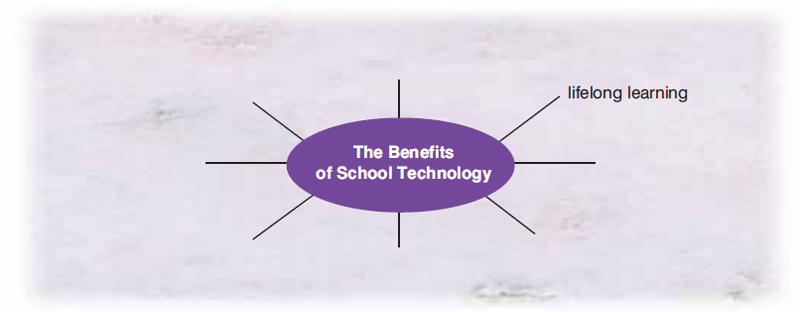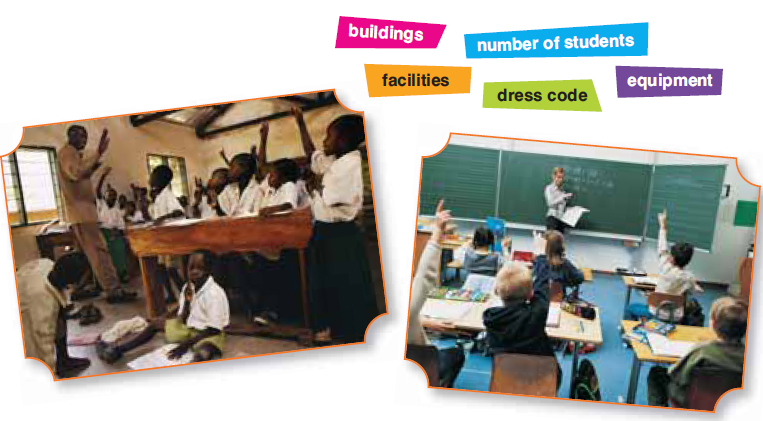 |
Writing a personal letter |
7.1 The headmaster of a school in New Zealand
is thinking of starting ‘after school clubs’ for his
students. He asked them to think of ideas and
write a report making suggestions. Here is the
report the student committee wrote. Read it and
answer the questions. Compare your answers
with your partner’s.
1. What is the topic of this report?
2. What is the reason for writing this report?
3. What is the main idea of each paragraph?
7.2 Look at the underlined words and
expressions and explain what they are used for.
7.3 The headmaster of your school has
asked you to write a short report suggesting
what new equipment your school needs. As
member of the student committee, write
your report describing the present situation
and suggesting what equipment you would
like to have. Justify your choices.
Make notes first and plan your report. Look at
the ‘Useful tips’ for help.
Think about what kind of information you
would like to include in the report.
- What is the topic of your report?
- Who are you writing this report for?
- What kind of equipment is there already in
your school?
- What else do you need to get?
7.4 Write your report.
|
|
From: The Student Committee
To: Mr. Willis
Subject: “After School Clubs”
The purpose of this report is to present our
suggestions for the creation of ‘after school
clubs’ in our school. We have many different
interests and we would like the clubs to offer a
variety of activities so there is something for
everyone.
Our school has no ‘after school clubs’ at present.
Although the idea has come up in student
committee meetings several times, unfortunately,
nothing has been done so far.
To begin with, many students have expressed
an interest in putting on plays or shows, and a
DRAMA CLUB would give them the opportunity
to do so. Furthermore, it could help raise money
for charity, or entertain students with
performances at the end of the year. It would
be a good idea if there were a COMPUTER CLUB,
too. Students could get together and do projects
in the computer lab, or get in touch with
computer clubs from other countries! Finally, we
would like to suggest an ART CLUB. It would be
a good idea for those of the students who are
artistic. They could come up with imaginative
ways to decorate our school. In addition, they
could have ‘Art Evenings’, to exhibit their work
to their parents and peers.
These are just a few ideas of course. The
possibilities are endless and we are all very
anxious to see the ‘after school clubs’ become a
reality.
USEFUL TIPS
- Make sure you know the reason you are
writing your report and who you are writing
for.
- Reports should not be very informal.
- Think about what you want to say and make a list of
your ideas grouping similar ones into paragraphs.
Write different paragraphs for different ideas.
- Make your comments and suggestions clear and
specific.
- Give your report a general title. You can also give
each paragraph a heading to make your report easy
to read.
|


